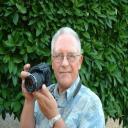Yahoo Answers is shutting down on May 4th, 2021 (Eastern Time) and beginning April 20th, 2021 (Eastern Time) the Yahoo Answers website will be in read-only mode. There will be no changes to other Yahoo properties or services, or your Yahoo account. You can find more information about the Yahoo Answers shutdown and how to download your data on this help page.
Trending News
DSLR, Mirrorless, Bridge Superzoom or Advanced Compact Camera?
I've been looking into DSLR cameras for a couple months now and cameras like the T3i, 60D, D3200, D5200, D7000 have been surfacing a lot.
I've since looked into superzooms like the Canon SX50 HS which has a 50x zoom (24-1200mm) and take pretty good pictures for only a 1/2.3" sensor.
I've also looked into cameras like the Sony RX100 with a 1" sensor. One of the highest praised compact cameras.
There's the option of the Sony NEX series as well.
I'm looking for phenomenal image quality but also a lot of versatility. For some reason I'm standoffish about Nikon's because I owned a T4i, even though I returned it, I like the lens selection from Canon and such. I've been looking at reviews of sensors on the dxp or whatever site that is and the D5200 scored an 84 compared to a 66 for the T3i, a 66 for the RX100, a 70 for the 60D, a 47 for the SX50 HS and an 81 for the D3200 but that is also shooting RAW. Help me decide!
8 Answers
- EDWINLv 78 years agoFavorite Answer
Honestly the only people who pay attention to lens tests done in a controlled lab setting are posers at best - the type who show up at camera club meetings and brag about how this lens or that lens they own can resolve x number of line pairs per millimeter but never show any of their results using that lens.
My personal prejudices automatically eliminate any "Bridge Superzoom" because of their tiny sensors with far too many pixels and their heavily compromised permanently attached zoom lenses.
I'm also less than impressed with Compact System Cameras because all of them - Sony, Nikon, Canon, Olympus, Panasonic - use a lens mount that isn't compatible with their big brother DSLR cameras without an adapter and some of the adapters are pretty pricey.
So that leaves us with the current DSLR crop from Sony, Pentax, Nikon and Canon.
The Sony SLT series - a37, a58, a65, a77, a99 - all use the legacy Minolta Maxxum "A" lens mount that dates back to 1985. There are still a lot of previously owned Minolta Maxxum AF lenses available and all of them are fully compatible with with the SLT series of cameras.
The Pentax K-30 is currently the lowest-priced Weather Resistant (WR) DSLR on the market. Although WR doesn't mean the camera is waterproof it does mean that you can use the K-30 in the rain or in very dusty conditions without worry. Also, the K-30 still uses a variant of the Pentax "K" lens mount that dates back to 1975. There are probably more manual focus "K" mount lenses available than you'd care to count plus all the AF "K" mount lenses made before the digital takeover of photography.
Both Sony and Pentax have a focusing motor in their camera bodies as well as their respective version of Image Stabilization (IS). Any AF lens made for either will auto focus as they should and any lens used becomes a stabilized lens.
Nikon still uses the "F" lens mount that dates back to around 1959 so any Nikon lens made since then (with a couple of very rare lenses) can be used on a modern Nikon DSLR although there may be limitations as to functionality. However, the entry-level models - D3100, D3200, D5100, D5200 - all lack a focusing motor in the camera body so only the more expensive AF-S lenses will auto focus on them. Nikon also has their version of IS (Nikon calls it VR) in some but not all of their lenses. So with Nikon you get to pay over and over for a focusing motor and lens stabilization.
Canon abandoned their "FD/FL" lens mount for the "EF" lens mount when they introduced their Rebel EOS auto focus 35mm film cameras in 1988. To further complicate matters, Canon now offers two different lens mounts - the "EF-S" which can only be used on their crop-sensor entry-level DSLR cameras (T3, T3i, SL1, T5i, 60D/60Da and 7D) and the "EF" which can be used on any of their DSLR models whether crop-sensor or full-frame. Canon has always had the focusing motor in their lenses and, like Nikon, chose to place their version of IS in some but not all of their lenses.
So that's my breakdown of the Big 4. Go to a camera shop and handle the different models and go with the one that you like best.
- Anonymous5 years ago
People are become increasingly wary of photographers, inagining every frame they are in can be misused to their disadvantage. God help you if you point a camera near their children! I know that there is no restriction on street photography in most developed countries but the paranoia is still there and I feel it increasing. The truth is that a digital photo can be sent to the other side of the planet in less time than it takes for an unwitting subject to realise they've been photo'd. That has changed the game a bit because even the falsehood that one is in control has been swept aside. I use very elderly 35mm cameras on the streets. A 75 year old Kodak folding Retina or a Balda will fit into a shirt pocket and their Xenar lenses are very very capable. Their age disarms people and they are more likely to want to talk about the camera than take a poke at you! Also there are very nice small Olympus, Chinon, Ricoh, Minolta fixed lense rangefinder from the 60s and 70s that similarly are seen as curiosities today, not real cameras. Another advantage is that these things take a picture when you press the button, there is no delay for metering/focussing. You should miss nothing.
- Land-sharkLv 78 years ago
Never mind the DXO ratings at this stage. It is the quality of the lenses you put on your DSLR that will matter way more. Put an 'L' lens on a Canon body or a 'G' lens on a Sony and if you don't get really good image quality then it will be down to user error or niavety concerning what's possible in the lighting conditions that pertain.
Potential image quality is sacrificed if you want a tiny little camera. For perfectionists no shot may seem better than a flawed shot, but even they know that if you set your compact at ISO 100 in satisfactory lighting you'll get something useable.
- How do you think about the answers? You can sign in to vote the answer.
- Jim ALv 78 years ago
Hi Jake. I couldn't agree more - reviews (especially on sensors) are meaningless. Technical stuff done in the lab has nothing at all to do with the viewer's eye - nothing.
If you have the skill to properly operate a dslr it doesn't matter if it has 10mp or 18... none of that matters. What really matters is your skill and the lenses you choose.
Any skilled photographer can get excellent results with with a 10mp camera. An unskilled photographer can't get good results with 18mp.
As I see it your best bet is to pick one you like. I shoot and only recommend Canon products because I know their attention to detail and quality.
Oh, one more thing. Super zoom? What for? The only way to get a good close up is to get close up. A super zoom won't do that. If you want a shot of something far away then get closer to it.
Source(s): 30+year professional. - Anonymous8 years ago
Can I scream..?
Don't pay too much attention to the reviews, by all means use them as a guide. If a camera feels good and comfortable in your hands and your confident with it, it will show in your shots.
Most DSLR's will give you phenomenal quality - it comes down to how well you can use them.
I've just upgraded recently from a Pentax ist DS (only 6megapixel) it has served me flawlessly for 8 years and still has plenty life left in it. I upgraded to a Nikon D5100 it has a similar spec to the Pentax K5 and the price was to good an opportunity to miss as it's on offer to clear the stocks - and it was half the price of the K5..!
I've been a 'Photo enthusiast' for over 30 years.
- keerokLv 78 years ago
Image quality depends on user skill. The camera is only a tool. The most versatile tool is the dSLR but if your idea of versatility is limited to lens zoom only, go with a bridge.
- ?Lv 44 years ago
1
Source(s): World-Class Photography Training http://photographymasterclass.enle.info/?He1E






